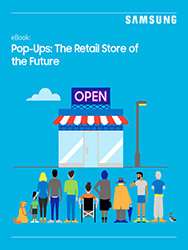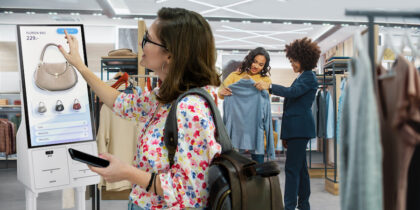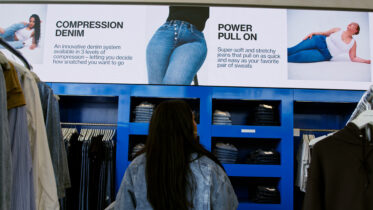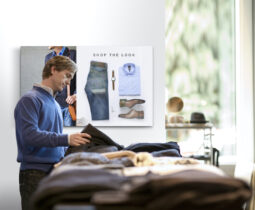Pop-up retail space can help retailers redefine the in-store experience, especially as the landscape of brick-and-mortar establishments is changing. 2017 was a record year for store closures with major retailers announcing plans to close 7,000 locations, according to Fung Global Retail & Technology.
The New York Times recently noted that pop-up stores are proving to be a good use of vacant retail space. Small, temporary locations offer benefits to both the retailers and the property owners. Landlords can earn rent on a property that would otherwise be vacant, and retailers can access space with less commitment and lower costs.
Yet even though pop-up retail can offer great benefits, getting one off the ground isn’t always easy. To ensure success, retailers must find the right location, find services partners and adopt the right technology.
Defining the Different Levels of Pop-Up
There are three main types of pop-up stores. The simplest is a non-digital analog store. The next level is a digital pop-up that might incorporate a simple mobile display, tablet, kiosk or a point of sale (POS) system for associates.
The most effective, or third type, is a smart and connected digital pop-up which makes full use of technology to gain insights into customer engagement, drive personalized brand messages and close the data gap.
Take Your Store to the Next Level
Discover how connected pop-ups can help you drive successful retail initiatives. Download Now
As parts of the retail industry become commodified with shrinking variances in price and selection, retailers are differentiating themselves by enhancing their customer service and brand experience. While a pop-up space enables brands and retailers to engage customers, generate buzz and gain insights, implementing smart technologies can help them think more broadly about their standing in today’s consumer market.
Generating Consumer-Based Data
In order to evaluate the shopper landscape, companies are turning to data. A report by PwC found eight in 10 retailers were investing or planning to invest in data to obtain a better view of the consumer. Yet, nearly 40 percent of respondents also said turning customer data into intelligence and actionable insight was a major challenge.
Through cameras, heat mapping, kiosks and interactive displays, brands can digitize their pop-up to attain the data they want. With a system and dashboard to process that data in a meaningful format, they can quickly obtain actionable analytics to drive the customer experience.
Pop-up retail offers the perfect opportunity to test such technologies. Brands can quickly obtain data and learn across locations to refine the size and layout of their pop-ups and their in-store strategies. Real-time information also enables associates to better engage consumers and to change digital media to meet the audience’s interests.
While analog “data dark” pop-ups can only measure performance based on total cost of the pop-up compared to income, a smart, connected space enables a retailer to attain a much clearer return on investment calculation. This information can then be used to find the optimal digital media strategies to drive traffic, based on the location, time of day, demographic and type of message — helping companies efficiently invest energy and content.
A Plug-and-Play Solution to Meet Any Need
Although smart, connected pop-ups offer many benefits, they can also be expensive and challenging to deploy. Brands must already identify a location, decide on a format, pick the provider, secure a lease, design the space and train staff. Then technology and connectivity needs to be added. It can take tens of thousands of dollars and up to six months to get a pop-up to market.
To make implementation easier, Samsung Connected Spaces offer brands a plug-and-play solution with all the components a brand needs to easily and quickly bring a pop-up idea to market. It is a smart, fast and flexible solution enabled by next-generation technologies with IoT audience measurement and a dashboard to display in-store data.
The solution brings intelligence to the table with a modular rental system of smart, connected kits that can be deployed virtually anywhere. Kits include furniture, cabling, media players, Samsung digital displays and tablets, setup and tear-down. And because of the modular design, they can be pieced together to meet size configurations of any space.
This type of service model enables a brand to take ideation to implementation in 90 days or fewer and converts a typically large, fixed cost to a rental model. “It makes it easy to get access to the technology without having to buy it, keep it and worry about end of life and all those other issues to just taking the kit for two or three weeks and returning it,” says Ian Hutchinson, retail vertical, Samsung business development.
In today’s retail landscape, companies are consistently searching to find the trend to stay competitive and relevant among consumers. With pop-up technology, stores can see first-hand what interests customers, adapt to changing preferences and keep ahead of the innovation curve.
See how Samung Connected Spaces can help enterprises expand their brand.








